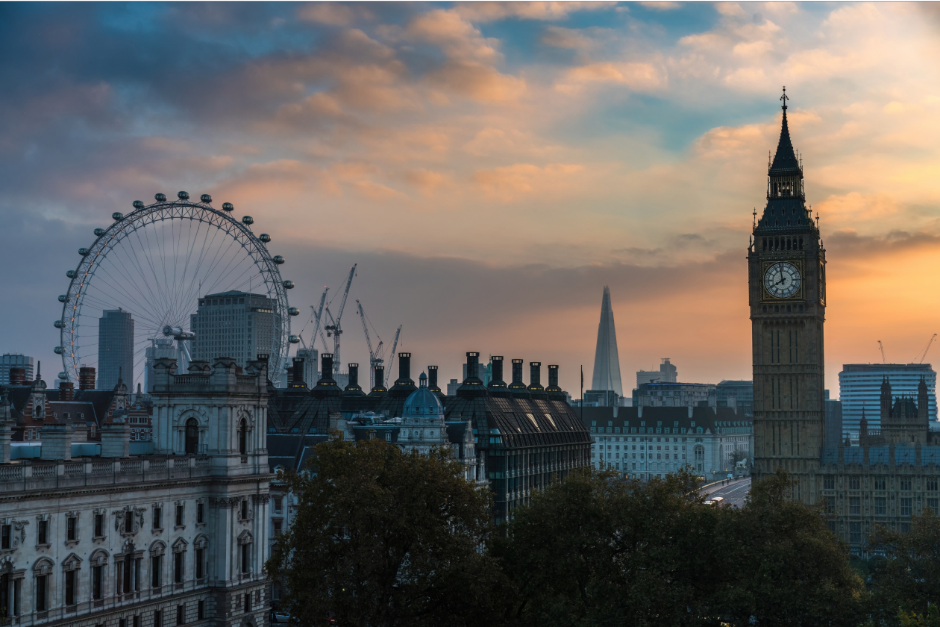The UK economy exited last year’s technical recession with faster than expected growth of 0.6 per cent for the first quarter of 2024, providing welcome economic news for Rishi Sunak ahead of the general election.
The quarter-on-quarter growth figure was the fastest since 2021 and boosted by car manufacturing and broad-based growth in services. It beat the 0.4 per cent forecast by the Bank of England and economists polled by Reuters.
The GDP numbers released by the Office for National Statistics on Friday marked the UK’s formal recovery from the shallow recession of the second half of 2023, when output slightly fell for two consecutive quarters, reflecting the impact of high borrowing costs and prices.
“The UK economy started the year with a bang,” said Henry Cook, economist at the financial company MUFG. He added that the country had “managed to navigate the energy crisis and period of rapid monetary tightening without experiencing a protracted downturn”.
The news was a boost for Sunak, who last year made economic growth one of his five key pledges to the British public. The prime minister’s Conservatives trail Labour by roughly 20 points in opinion polls.
Jeremy Hunt, chancellor, said: “There is no doubt it has been a difficult few years, but today’s growth figures are proof that the economy is returning to full health for the first time since the pandemic.”
But Rachel Reeves, Labour’s shadow chancellor, said that “this is no time for Conservative ministers to be doing a victory lap. The economy is still £300 smaller per head than when Rishi Sunak became prime minister.”
Growth in the latest quarter was driven by a 0.7 per cent increase in services output, suggesting stronger consumer activity as inflation fell. Manufacturing output grew 1.4 per cent, driven by car production which has grown for six consecutive quarters.
Commenting on the GDP figures Liz McKeown, ONS director of economic statistics, said: “There was broad-based strength across the service industries with retail, public transport and haulage, and health all performing well. Car manufacturers also had a good quarter. These were only a little offset by another weak quarter for construction.”
Sterling was up 0.1 per cent against the dollar on Friday morning, while investors held the probability of a rate cut by June at about 45 per cent.
On Thursday, the BoE said that following weakness last year, economic growth was expected to pick up over the next three years. The central bank held interest rates unchanged at a 16-year high of 5.25 per cent but signalled it would cut rates this summer if inflation stayed low.
Yael Selfin, chief economist at KPMG UK, expects continued growth for the rest of this year as “falling inflation and real pay increases should help repair some of the damage to household incomes and support households’ consumption”. She added that growth prospects have also improved in Europe, which could lead to a recovery in exports.
The UK data comes after the Eurozone recorded 0.3 per cent growth for the first quarter, and the US registered 0.4 per cent. The figure for the UK was the strongest of the G7 countries with available data.
In March, output was up 0.4 per cent month on month, led by services with wholesalers, the health sector and hospitality all doing well. This was much stronger than the 0.1 per cent forecast by economists polled by Reuters and followed a 0.2 per cent expansion in February.
“March’s surprisingly strong rise in GDP was the fourth rise in five months and showed that the recovery has been gathering momentum more quickly than we had thought,” said Ruth Gregory, economist at Capital Economics.
She added that the economy was only marginally up from the first three months last year so “is still fairly weak”, but early indicators suggested growth continued in April. She said she expected “that the recovery will be stronger than most forecasters anticipate”.
The first quarter also marked the return to growth for per capita output. The ONS said GDP per head increased by 0.4 per cent in the first three months of the year, following seven consecutive quarters without positive growth. It is estimated to be 0.7 per cent lower than in the same quarter a year ago.
Household consumption also returned to growth after contracting in the previous two quarters with rising spending in housing, hospitality and recreation.
Relative to the pre-pandemic levels of the fourth quarter of 2019, the UK economy was up 1.7 per cent, which is well below the 8.7 expansion in the US and the 3.8 per cent growth in the Eurozone.
Additional reporting by Mary McDougall
This article was written by Valentina Romei from The Financial Times and was legally licensed through the DiveMarketplace by Industry Dive. Please direct all licensing questions to legal@industrydive.com.

